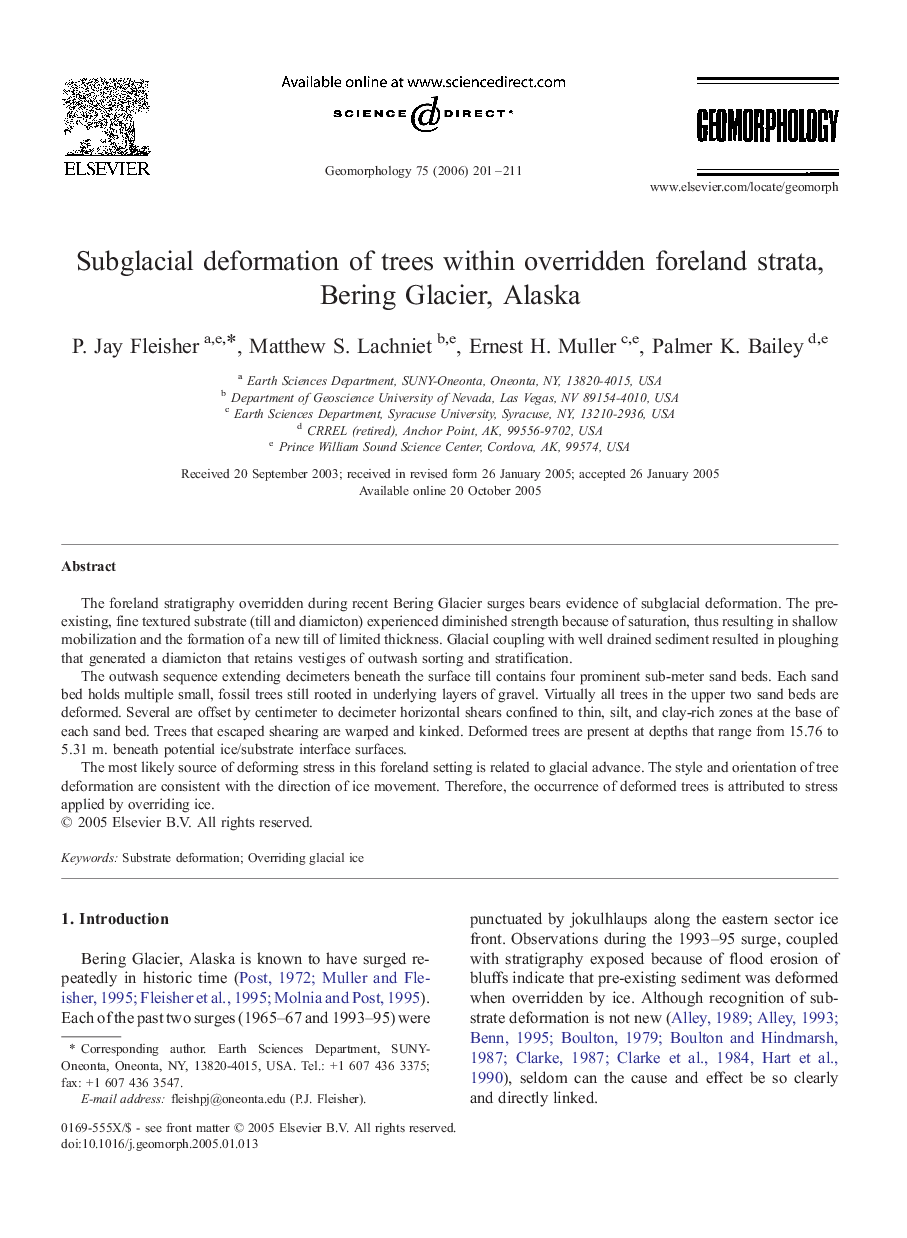| Article ID | Journal | Published Year | Pages | File Type |
|---|---|---|---|---|
| 4687580 | Geomorphology | 2006 | 11 Pages |
The foreland stratigraphy overridden during recent Bering Glacier surges bears evidence of subglacial deformation. The pre-existing, fine textured substrate (till and diamicton) experienced diminished strength because of saturation, thus resulting in shallow mobilization and the formation of a new till of limited thickness. Glacial coupling with well drained sediment resulted in ploughing that generated a diamicton that retains vestiges of outwash sorting and stratification.The outwash sequence extending decimeters beneath the surface till contains four prominent sub-meter sand beds. Each sand bed holds multiple small, fossil trees still rooted in underlying layers of gravel. Virtually all trees in the upper two sand beds are deformed. Several are offset by centimeter to decimeter horizontal shears confined to thin, silt, and clay-rich zones at the base of each sand bed. Trees that escaped shearing are warped and kinked. Deformed trees are present at depths that range from 15.76 to 5.31 m. beneath potential ice/substrate interface surfaces.The most likely source of deforming stress in this foreland setting is related to glacial advance. The style and orientation of tree deformation are consistent with the direction of ice movement. Therefore, the occurrence of deformed trees is attributed to stress applied by overriding ice.
